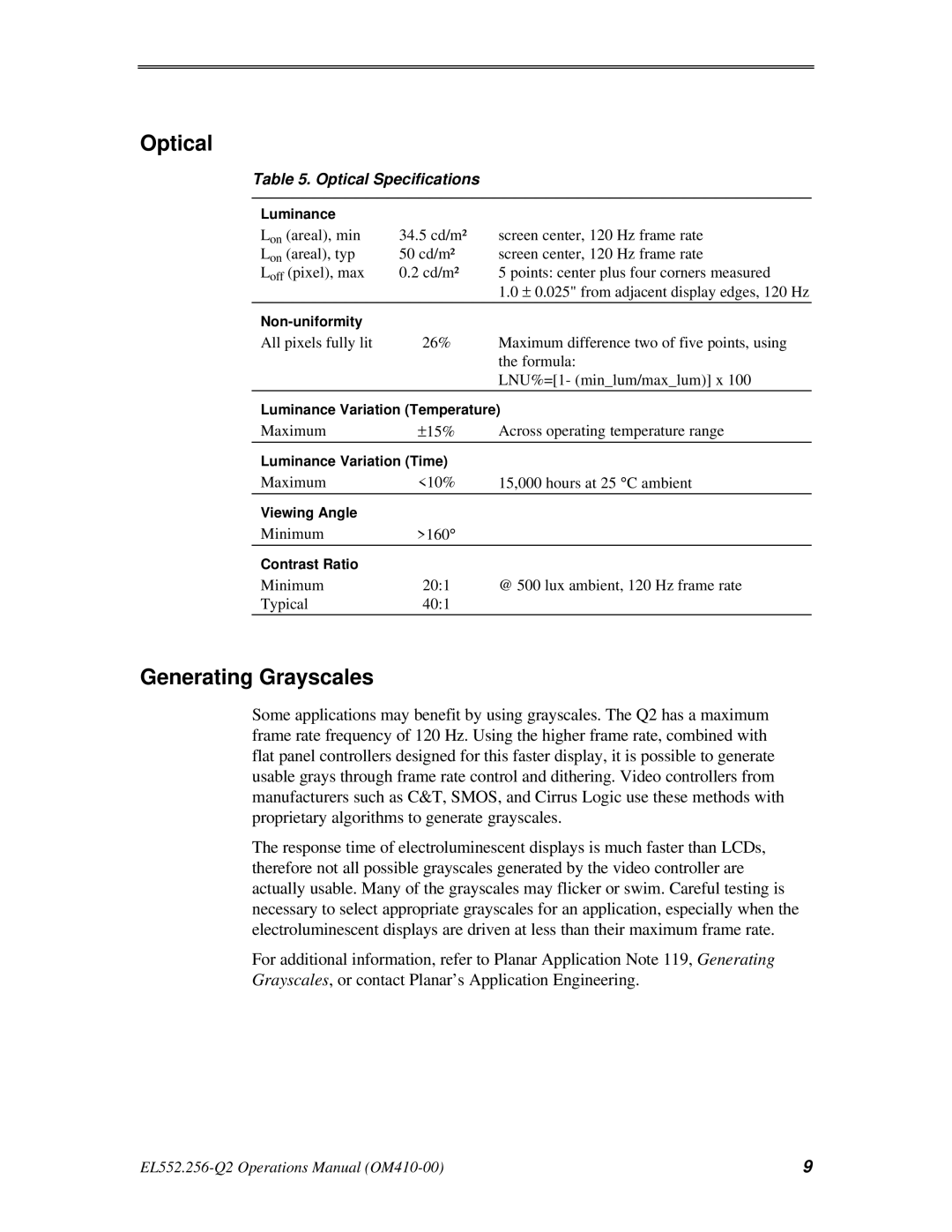
Optical
Table 5. Optical Specifications
Luminance
Lon (areal), min | 34.5 cd/m² | screen center, 120 Hz frame rate |
Lon (areal), typ | 50 cd/m² | screen center, 120 Hz frame rate |
Loff (pixel), max | 0.2 cd/m² | 5 points: center plus four corners measured |
|
| 1.0 ± 0.025" from adjacent display edges, 120 Hz |
|
|
|
|
| |
All pixels fully lit | 26% | Maximum difference two of five points, using |
|
| the formula: |
|
| LNU%=[1- (min_lum/max_lum)] x 100 |
Luminance Variation (Temperature) | ||
Maximum | ±15% | Across operating temperature range |
|
| |
Luminance Variation (Time) |
| |
Maximum | <10% | 15,000 hours at 25 °C ambient |
|
|
|
Viewing Angle |
|
|
Minimum | >160° |
|
|
|
|
Contrast Ratio |
|
|
Minimum | 20:1 | @ 500 lux ambient, 120 Hz frame rate |
Typical | 40:1 |
|
Generating Grayscales
Some applications may benefit by using grayscales. The Q2 has a maximum frame rate frequency of 120 Hz. Using the higher frame rate, combined with flat panel controllers designed for this faster display, it is possible to generate usable grays through frame rate control and dithering. Video controllers from manufacturers such as C&T, SMOS, and Cirrus Logic use these methods with proprietary algorithms to generate grayscales.
The response time of electroluminescent displays is much faster than LCDs, therefore not all possible grayscales generated by the video controller are actually usable. Many of the grayscales may flicker or swim. Careful testing is necessary to select appropriate grayscales for an application, especially when the electroluminescent displays are driven at less than their maximum frame rate.
For additional information, refer to Planar Application Note 119, Generating Grayscales, or contact Planar’s Application Engineering.
9 |
